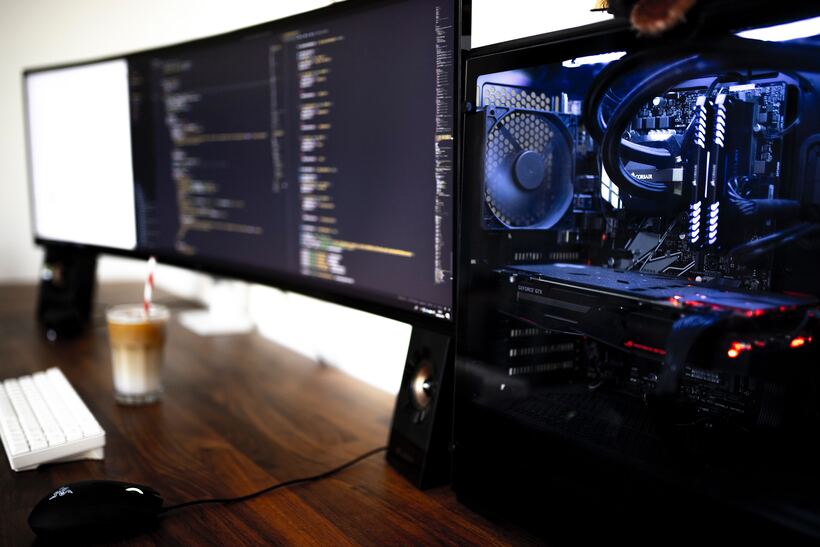
Step into a world where reality is redefined – Virtual and Augmented Reality. These cutting-edge technologies have revolutionized the way we interact with digital content, offering immersive experiences like never before. But behind the captivating visuals lies a crucial element that can make or break these experiences: web performance. Let’s dive into the role of web performance in enhancing virtual and augmented reality encounters, and discover how it shapes user engagement and satisfaction.
Importance of Web Performance in VR and AR
In the immersive worlds of Virtual and Augmented Reality, web performance plays a crucial role in delivering seamless experiences to users. Imagine exploring a virtual environment only to be interrupted by lagging or buffering – it can quickly break the illusion and detract from the overall experience.
Fast loading times and smooth interactions are essential for keeping users engaged and immersed in VR and AR applications. A well-optimized website ensures that content is delivered swiftly, enhancing user satisfaction.
Efficient web performance not only enhances user experience but also impacts important metrics such as bounce rates, conversion rates, and overall engagement levels. Users are more likely to spend time on a site that loads quickly and functions seamlessly.
By prioritizing web performance optimization in VR and AR experiences, developers can create captivating environments that captivate users from start to finish.
Impact of Poor Web Performance on User Experience
Imagine eagerly putting on your VR headset, ready to be transported to a new reality, only for the experience to be plagued by long loading times and glitches. Poor web performance in virtual and augmented reality can significantly impact user experience.
Users expect seamless interactions in these immersive environments, and any delays or lag can break their sense of immersion and disrupt the overall enjoyment of the experience. Slow loading times can lead to frustration and disengagement, ultimately affecting how users perceive the content.
Poor web performance can also hinder important functionalities within VR and AR applications, such as real-time interactions or dynamic content updates. This not only affects user engagement but also limits the full potential of these cutting-edge technologies.
In a world where user expectations are constantly evolving, optimizing web performance is crucial in ensuring that virtual and augmented reality experiences deliver on their promise of immersiveness and interactivity.
Strategies for Optimizing Web Performance in VR and AR
When it comes to optimizing web performance in virtual and augmented reality experiences, there are several strategies that can greatly enhance user engagement.
One effective strategy is to prioritize loading critical resources first to ensure a smooth and seamless experience for users. This includes optimizing images, videos, and 3D content to reduce load times.
Another key tactic is leveraging caching mechanisms to store frequently accessed data locally on the device, minimizing the need for repeated downloads and improving overall performance.
Implementing lazy loading techniques can help improve page speed by only rendering content as it becomes visible on the screen, rather than all at once.
Reducing unnecessary animations and complex interactions can also contribute to faster load times and smoother user interactions in VR and AR environments.
Successful Implementation of Web Performance in VR and AR
Let’s delve into some real-world examples of how optimizing web performance has enhanced virtual and augmented reality experiences. One case study involves a popular VR gaming platform that saw a significant increase in user engagement after improving loading times and reducing latency. This resulted in higher player retention rates and overall satisfaction.
In another instance, an AR app for interior design utilized content delivery networks to ensure smooth rendering of 3D models in real-time. By prioritizing web performance, they were able to provide users with seamless interactions and faster response times, leading to positive reviews and increased downloads.
Company specializing in virtual tours integrated lazy loading techniques to enhance the viewing experience on their website. This optimization allowed users to explore different locations without experiencing lag or buffering issues, ultimately boosting customer engagement and conversion rates.
Conclusion
In a nutshell, web performance plays a crucial role in enhancing the virtual and augmented reality experiences for users. By optimizing web performance, developers can ensure that users have seamless interactions with VR and AR applications, leading to improved engagement and satisfaction. The impact of poor web performance on user experience cannot be overlooked, as it can result in laggy visuals, delayed responses, and overall frustration.
Implementing strategies such as code optimization, content delivery network usage, image compression, caching techniques, and minimizing HTTP requests are key to improving web performance in VR and AR environments. These tactics not only enhance loading speeds but also contribute to reducing latency and providing a smooth user experience.
Through successful case studies showcasing the effective implementation of web performance optimization techniques in VR and AR applications, it becomes evident that prioritizing speed and efficiency leads to better outcomes for both developers and end-users alike. By focusing on delivering high-quality content seamlessly through optimized web performance practices, companies can set themselves apart in the competitive landscape of virtual and augmented reality technologies.
Understanding the significance of web performance in shaping VR and AR experiences is paramount for achieving success in this rapidly evolving digital realm. As technology continues to advance at a rapid pace, staying ahead by prioritizing optimal web performance will undoubtedly be instrumental in creating immersive experiences that captivate audiences worldwide.

